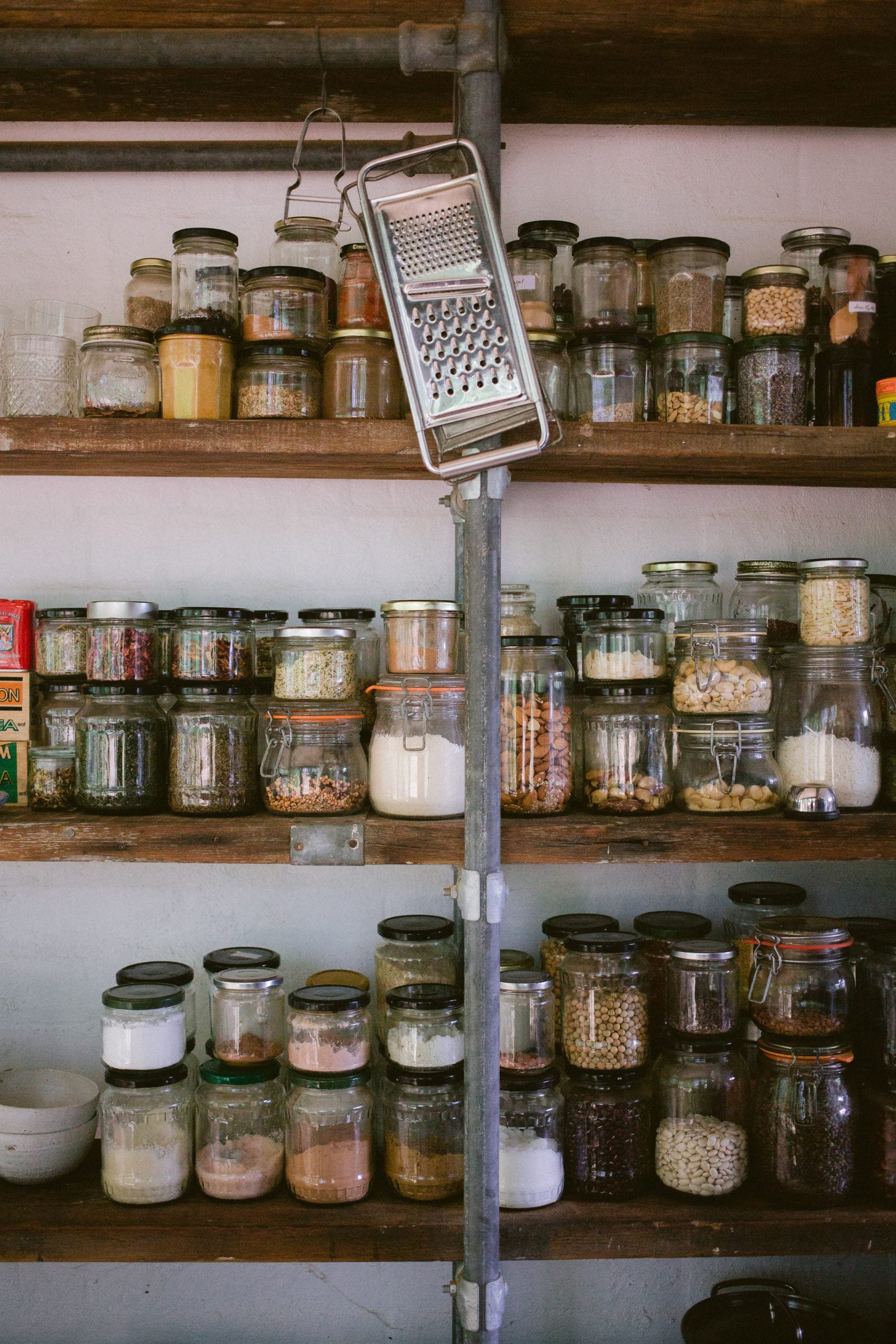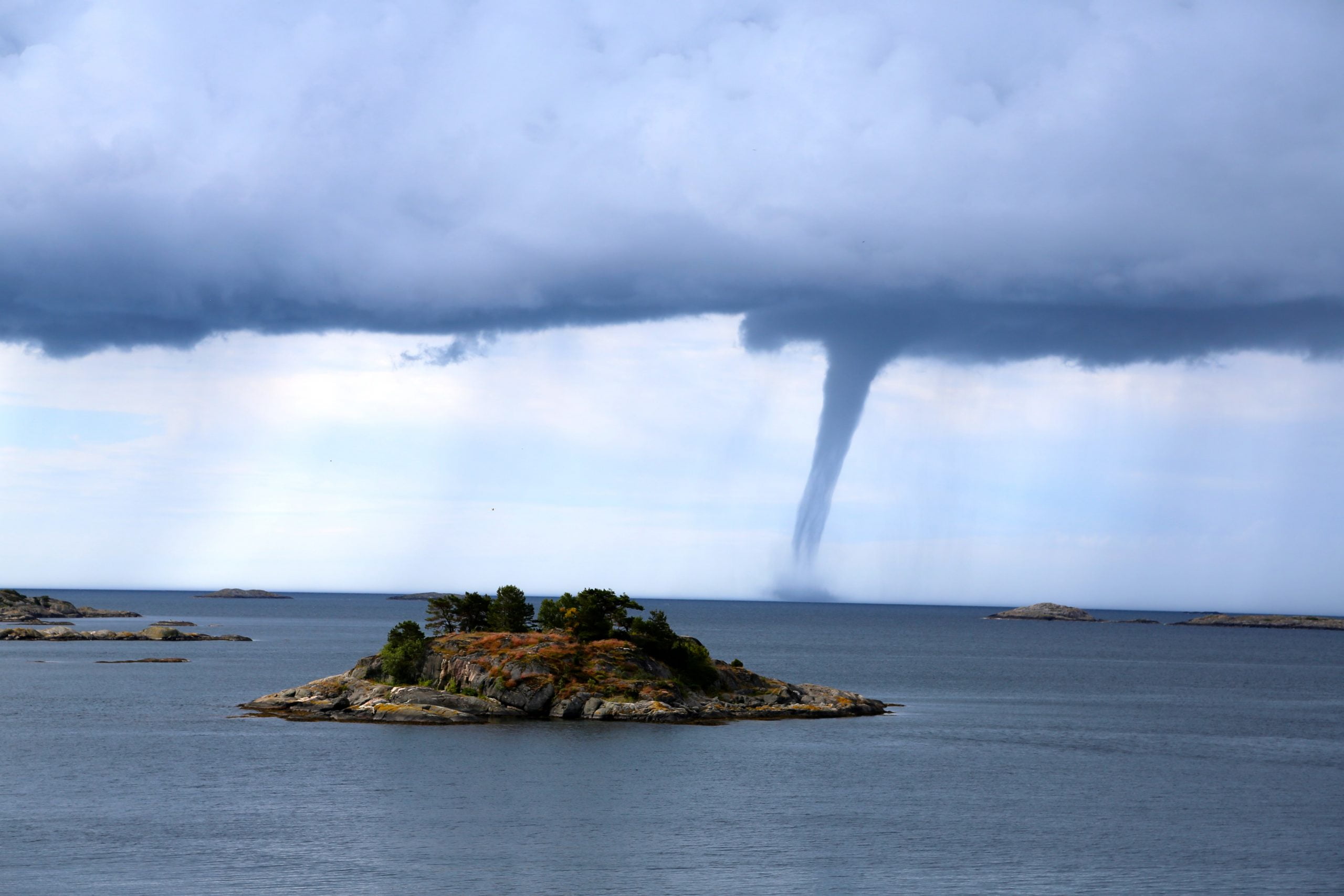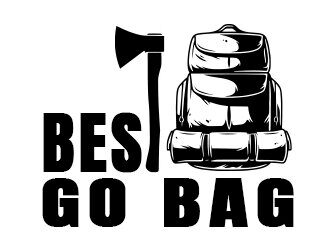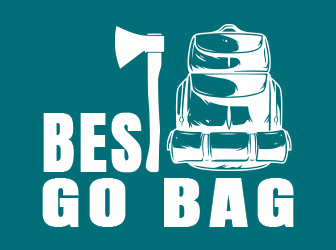Emergency Preparedness Checklist: Ultimate Preppers’ Guide

So, you’ve made the decision to join the prepper movement, and you’re not exactly sure where to begin. It’s easy to feel a little stressed and even overwhelmed when you first start gathering supplies and begin organizing them—there are literally hundreds of items available on the market.
With so many options, you need a checklist to refer to when stockpiling the essentials, so you know exactly what you need and what you’ve already purchased. Here’s the ultimate preppers’ guide to help you document and organize your supplies.
The Ultimate Supply Checklist
- Water and filtration methods
- Food
- First Aid Supplies
- Shelter
- Heat and Power
- Tools and misc. Items
- Personal and comfort items
Water
Did you know that FEMA recommends you store one-gallon of H2O per day for each person in the household? It’s not possible to carry large amounts of water if you need to leave your house in a hurry or the supply needs to last for a long period. So, keeping two ways to purify or filter water on hand is also extremely important.
Boiling water is one of the easiest and safest ways to make sure any water you’ve gathered is safe to drink. Boil it for at least sixty seconds and then pour it back and forth between two different containers. This process will cool it down and put oxygen back into it to improve the taste.
It’s also a good idea to learn where the closest bodies of water are and consider a personal water filter or drinking water germicidal tablets. Being cut off from community resources means you will need a large supply of water or at least know where nearby sources are.
Food
Just like water, food is essential to your survival. Thankfully, there are plenty of shelf-stable food items available.
- Powdered milk
- Rice
- Pasta
- Iodized salt
- Pasta
- Honey
- Dry beans
- Canned fruits
- Peanut butter
- Jellies and jams
- Canned veggies
- Oats
- Rice
- Flour
- Wheat
- Powdered and canned cheese
- Energy and power bars
- Freeze-dried food
- Tea
- Coffee
- Spices
- Baking powder
- Vinegar
Keep a running list of all the food and its expiration date if you plan on storing more than a thirty-day supply. You will need to switch things out periodically, so storing things that you like to eat will make rotating the food much easier.
First Aid Supplies
You will need essential first aid supplies in case hospitals, and doctors are not available. You can purchase a great pre-made first aid kit like the ones at Stealth Angel Survival, or you can make your own. It should include:
- Neosporin
- Hydrogen peroxide
- Band-aids and bandages
- Butterfly bandages
- Ace bandages
- Rolled gauze
- Medical tape
- Duoderm
- Burn gel
- Moleskin or blister pads
- Scissors
- Material for splinting
- Nitrile gloves
- Alcohol pads
- Thermometer
- Aspirin or Tylenol
- Vaseline
- Snakebite kit
- Benadryl
- Aloe-vera
- Pedialyte
- Needles and sutures
- Syringes
- Tweezers
- Hand-sanitizer
- Essential oils
- Quick clot
- Q-tips and cotton balls
- Insect repellent
- Prescription medicines, especially antibiotics
- Chapstick
- Charcoal tablets
- Smelling salts
- Antibiotics
- Iodide tables
- Isopropyl (rubbing) alcohol
- Sunblock
- First aid manuals
Of course, feel free to personalize this list of necessary supplies to meet the needs of your family. Everyone is different and has their own medical issues, so it’s of the utmost importance that you include everything that you will need for an extended period.
Shelter
Shelter is also critical, especially if you are on the go. If you happen to have the skills to make one yourself, then that is great! However, most beginning preppers don’t, so you need to look at other options. If you need to leave on the fly, then a bug-out bag is the first item you should purchase.
A bug-out bag is simply a bag you keep stocked with the necessary items if an emergency situation were to occur and you need to leave your house quickly.
Tents are a perfect shelter, but they can be too difficult to carry because they are often rather heavy. Instead, choose a lightweight tarp that folds and stores easily in your bag. You need something that will protect you from the natural elements because sleep is extremely critical to keep you going during catastrophic events.
Heat And Power
Hypothermia is a serious medical risk whether you’re on the go or without power—even if it’s not freezing outside. With this in mind, be sure to wear layers of warm clothing so you can take off or add extra layers as the weather changes. Comfortable boots and socks also keep you warm and make traveling on foot much easier.
Sleeping bags and blankets are other essential items for warmth and comfort. Be sure to stock up on rechargeable and disposable batteries or critical items such as battery-powered lanterns, tactical flashlights, and other electronics. Purchase a solar power watt kit and a power inverter that allow you to power electricity or simply purchase items with batteries that use the sun.
Tools And Other Miscellaneous Items
There are several tools that you want to make sure you have on hand in the event of an emergency, such as:
- Ax
- Wire for repairs
- Wheelbarrow
- Shovel
- Screwdrivers
- Hammer
- Firestarter or matches
- Multi-tool
- Screws and nails
- Bleach
- Jumper cables
- Duct tape
- Zip ties
- Trash bags
- Glass jars
- Pencil and paper
- Land maps
- Compass
- Rope or cordage
Personal And Comfort Items
There are other nice items that can provide some comfort and perhaps a feeling of normalcy when things get a little crazy. You will want deodorant and soap for personal hygiene, as well as toilet paper.
Cards and board games can provide entertainment, while gum, hard candy, and chocolate can be treats. You can also stock up on books to read and even stash your favorite wine for special occasions.
In addition to these items, if you purchase a ham radio, you can still have a connection with the outside world. It’s a way of communication that has withstood the test of time. Just be sure to keep a list of codes, contact numbers, and radio frequencies so you will have everything you need. A hand-crank radio and walkie talkies are other excellent ways to communicate.
Wrapping It Up
This ultimate prepper checklist certainly isn’t all-inclusive by any means. When you’re stockpiling essential items to survive if you and your family are cut off from community resources, tailor the list to your specific needs. Just make sure to add the essentials like water, food, first aid supplies, and shelter.
And don’t feel as though you need to buy everything all at once! Start stashing back a few items at a time, and you will settle into the prepper lifestyle in no time.
When looking for survival items, be sure to purchase from a reliable company with a true passion for providing top-quality products at an affordable price—like Stealth Angel Survival.
Stealth Angel Survival is backed by a world-class customer support team that is with you every step of the way to ensure you get exactly what you need to take care of yourself and your loved ones in the event of an emergency.
Whether you are looking for first aid kits or all-in-one emergency kits, Stealth Angel Survival has got your back.
Sources:
https://www.chicagotribune.com/lifestyles/sc-survivalists-preppers-family-1206-20161130-story.html
https://www.fema.gov/pdf/library/f&web.pdf
https://www.mayoclinic.org/diseases-conditions/hypothermia/symptoms-causes/syc-20352682
Does Water Expire: All The Facts You Need To Know


Have you ever been curious as to why good ol’ H2O has an expiration date? When you purchase bottles of water from the store, there is often an expiration date printed on them. This may seem a bit surprising since water itself never actually expires. This is of particular concern to those who attempt to stock up on large amounts of bottled water for extended periods of time—such as those storing water for emergencies.
So, does water actually expire? Keep reading to find out.
Everything You Need To Know About Storing Water
You just finished an intense workout, and you reach for a refreshing bottle of water. You open the seal, and as you bring the bottle close to your lips, you notice that the expiration date says the water expired two months ago.
Should you worry?
Of course not. Water doesn’t actually go bad. Having an expiration date on a bottle of H20 makes about as much sense as having an expiration date on salt or sugar.
There are many different reasons why water bottles come with an expiration date. The primary reason is government bureaucracy: Water is a consumable food product, and as such, it’s subject to laws requiring dates of expiration on all consumables, from lemonade to bologna and everything in between.
Besides that, the expiration date on water has certain benefits for the manufacturer.
Although water does not go bad, the plastic bottle that it’s contained in does and will “expire” and will eventually start leaching harmful chemicals into the water. This won’t necessarily render the water toxic, but it might make it taste somewhat less than “mountain spring fresh.’ If consumers contact drink manufacturers to complain that the water they purchased several years earlier tastes bad, the bottles can point out that it’s their own fault for not drinking it by the expiration date.
With that in mind, here are some other facts you need to know about storing water:
Water should always be stored in UV-resistant, food-grade plastic containers or in metalized bags.
Traditionally, H2O storage barrels are blue. This color limits heat, light exposure, and biological growth (algae and bacteria) and also signifies that what is being stored in the container is safe for consumption (for example, gas is stored in red containers and is not safe for consumption). The safest containers to hold H20 in are polyethylene-based plastics or plastics # 1, #2, and #4.
Other helpful tips and tricks for storing water in plastic containers:
- Don’t ever use your old milk jugs for water storage. Since some milk jugs are biodegradable, they tend to break down over time. Also, any live cultures found in the milk that remains in your jug could make you sick if you store drinking water in milk jugs.
- Soda bottles can be used for long-term water storage. However, it’s important to keep in mind that plastics absorb flavors, so your drinking water may taste a bit like cola.
You can’t solely rely on a water barrel for all the situations you may encounter.
If you have to evacuate your home, chances are you won’t be able to carry a heavy water barrel with you. Also, if you only have one water barrel or one water source, you may run out of water, depending on the number of people in your household and the number of days you’ll be without water.
Remember that the average amount to store is 1 gallon of water per day per person for two weeks. Store water in containers of various sizes and plan for different situations. You can easily siphon the water from your barrel into other containers and refill it before an emergency arises.
Most barrels are not built to stack on each other.
If you want to stack your water barrels because you don’t have enough room, use containers with grooves on the bottom for stacking. Barrels are safest if they are stored standing.
However, don’t store your water barrel directly on cement or on your garage floor. Plastics tend to absorb flavors, and odors from liquids spilled on the floor, gasoline, and chemicals used to create the concrete. These odors and chemicals can make the taste of the water unbearable to drink. Instead, place your barrel on top of a wood board or cardboard so that chemicals and odors don’t leach in.
Water purifiers will kill up to 99.9% of all microorganisms in your water.
We love the Stealth Angel Personal Water Filter because it begins with a layer of cotton and medical-grade, hollow fiber UF membrane, eliminating 99.99% of bacteria by itself. After that, the water will then pass through activated carbon and antibacterial beads for an even more thorough cleanse, making this the perfect tool to keep on hand for any emergency situation.
Words simply can’t express how utterly critical it is to have access to fresh, drinkable water when you’re in a bad spot for longer than you expected. With Stealth Angel’s Water Filter, you can confidently drink water safely without the risk of getting sick from harmful bacteria and other microorganisms.
Water must be stored in a cool, dry location such as a basement or storage room to not be exposed to warm or hot temperatures.
As the temperature rises about room temperatures, chemicals within the plastic containers will begin to seep into the water at a faster rate. This can put your health and the health of your loved ones at risk.
Also, be aware of exposing your H2O to UV or ultraviolet light. UV light can also cause chemicals found in plastic containers to seep into the water at a much faster rate. The longer you store water in plastic, the more exposure to the chemicals will increase. At higher temps, unhealthy amounts of these harmful chemicals will pose a threat to human health. This is why it’s imperative to dispose of any H2O that has not been used by its date of expiration.
Good practice is to rotate your water out before it expires and replace it with water with a longer shelf life. Many preppers suggest rotating your water out every three to six months. This may be a bit excessive, but it will ensure that your water still tastes good and occurs with very little chemical seepage.
Conclusion
While bottled water, professionally manufactured emergency water, and other types of water that you may have purchased all have expiration dates printed on their containers, it doesn’t necessarily mean the water itself goes bad. It usually just means the container used to hold the water will reach the end of its life.
Storing enough water to survive a prolonged period of time while maintaining the water’s quality is extremely important. If you can keep your water in a dark, cool location and remember to rotate it frequently, you should be fine. If not, it may be best for you to invest in something that can help filter your water, like the Stealth Angel Personal Water Filter.
Stealth Angel Survival is the leader in emergency preparedness kits, supplies, and survival products. Anything that you may need in the event of an emergency or disastrous situation, Stealth Angel Survival’s got your back.
Sources:
https://www.livescience.com/50326-what-is-ultraviolet-light.html
https://omnexus.specialchem.com/selection-guide/polyethylene-plastic
Best Emergency Foods To Have In Your Storage


Many individuals are paralyzed by the job of planning for an emergency because the truth of the matter is that it’s actually really hard to plan for the unknown! But stocking emergency food and supplies is a lot like buying insurance: Your household may never face a devastating natural disaster or pandemic—but if it does, and you are unable to get to a store, knowing what to stock up on for emergencies may prove priceless.
So, if you’ve been procrastinating—perhaps while watching the latest news on the current pandemic that is sweeping over the globe—it’s time to get on it. In this article, we’ll go over all the best emergency foods that you should be purchasing to keep in your storage.
Are you ready? Let’s dive in!
What To Always Keep In Your Pantry
These non-perishable food items have lengthy expiration dates, so you can stash them away for long periods of time, even if it’s not tornado or hurricane season. It’s important to make a list of everything in your stockpile, and be sure to check expiration dates every six to twelve months to keep things fresh. And of course, don’t forget to have a nonelectrical can opener on hand at all times—all that food won’t be of any use if you can’t open it!
Canned Meat
You can buy tuna, chicken, salmon, and other great meat products, which are all canned. Spam—while being something that many people raise an eyebrow at—is an extremely nutritious meat product. Meat will undoubtedly be the hardest type of food to find during a crisis, so do yourself a favor and stock up well in advance.
Peanut Butter
An absolutely great source of energy and a family favorite, peanut butter is chock-full of healthy fats and protein. Unless the jar happens to indicate otherwise, you don’t have to keep this item in the fridge after opening.
Whole Wheat Crackers
Crackers are an excellent replacement for bread and make a fine substitute when making little sandwiches. Due to their higher fat content, whole-grain or whole-wheat crackers tend to have a shorter shelf life than their plain salty counterparts (check the box for expiration dates), but the extra fiber pays off when you are particularly hungry. Consider vacuum-packing your whole-wheat crackers to prolong their freshness.
Nuts And Trail Mixes
Be sure to stock up on these high-energy foods! Nuts and trail mixes are healthy and convenient for snacking during a tornado, ice storm, hurricane, or another emergency. Look for vacuum-packed containers, which will prevent the nuts from oxidizing and losing their freshness.
Pasta
Pasta is a versatile food item that is high in healthy carbohydrates and stores extremely well. You can make a ton of different dishes with pasta, from casseroles to Italian food and everything in between.
Sugar, Salt, And Pepper
If you have access to a charcoal or propane stove, you may be doing some cooking. A basic supply of seasonings and sweeteners like sugar, salt, and pepper will improve the flavor of your food—both fresh and packaged.
Cereal
Cereal is another great food item to store in your emergency stockpile. Just be sure to choose multigrain cereals that are individually packaged, so they don’t become stale after opening. Nobody likes stale cereal!
Granola Bars And Power Bars
Filling and healthy, these portable snacks usually stay fresh for at least six months to a year. Plus, they are an excellent source of carbohydrates.
Rice
Rice is another great source of healthy carbohydrates that will store really well. Buy the whole grain rice—not the quick rice. Quick rice may be easier to make, but it has a very limited shelf life.
Beans
There are many varieties of dried beans, all of which store incredibly well for long periods of time, are super simple to cook, nutritious, and one of the few non-meat sources of protein around.
Dried Fruits
In the absence of fresh fruit, these healthy snacks offer dietary fiber and potassium. They are loaded with a significant amount of nutrients and calories, which are perfect for when a disaster strikes.
Canned Veggies And Fruits
When the real deal isn’t an option, canned fruit and veggies can provide you with essential nutrients. Be sure not to throw the packing water away, as it will contain vitamins and minerals as well. Instead, use it for a tasty soup stock.
Cheese
Believe it or not, cheese is another great food item to store in case of an emergency. To store cheese properly, it needs to be triple dipped in wax to make an airtight seal. In this form, it can be kept without refrigeration for many, many years. Even if your cheese happens to form mold—it will only be on the surface. Simply cut the moldy part off, and the rest of the cheese is still good to eat.
Powdered Milk
While most individuals don’t particularly like the flavor of powdered milk, it’s a good alternative when you don’t have any access to other milk. It’s also necessary for backing and provides needed calcium for proper bone growth.
Spices
Your loved ones may have to get used to eating different things than what they are typically used to. Spices allow you to mask or add flavors to things that are commonly too bland. So be sure to stock up on the types of spices that your family likes so that you can make food that they will enjoy.
Coffee And Tea
Okay, so coffee and tea may be more of a comfort item, but many of us don’t really function well before our first or second cup of joe in the morning. So be sure to stock up!
Sports Drinks
The carbohydrates and electrolytes found in these popular beverages will help you to rehydrate and replenish fluid when water is scarce. Just be sure your sports drink of choice doesn’t come with a long list of unhealthy additives, such as sugar or artificial sweeteners.
Canned Chili And Soups
Chili and soups can be eaten straight out of the can and provide a wide variety of healthy body-nourishing nutrients. Look for low-sodium options.
A Final Word
Emergencies—a hurricane, blizzard, flood, etc.—often come with little to no warning. Stocking up now on the right non-perishable food items will help you weather the storm—or global pandemic—with less stress. For an all-in-one shortcut, you can order a great emergency kit and other emergency supplies from a company like Stealth Angel Survival.
Stealth Angel Survival is the premier site to find everything that you and your family may need in the event that disaster strikes. Founded with one guiding principle, which is to provide consumers with the most essential, highest quality products at an affordable price, it’s no wonder why many people look to Stealth Angel Survival for all of their emergency preparedness needs.
When preparing for the worst, make sure you are getting your emergency equipment from the best, Stealth Angel Survival.
Sources:
https://www.dhs.gov/natural-disasters
https://www.who.int/csr/disease/swineflu/frequently_asked_questions/pandemic/en/
Everything You Need To Know About Tornadoes


Many of us have seen the kind of incredible power a tornado can wield in a movie or on TV, and a few of us have even lived through one or two of them. These intense storms possess an almost god-like presence in the media and our minds. They are dramatic, deadening columns that descend from the sky and obliterate everything in their path. But what exactly are they?
What Is A Tornado?
A tornado is a violently rotating column of narrow air that extends from a thunderstorm to the ground. Because wind is invisible, it’s tough to see a tornado unless it forms a condensation funnel made up of debris, water droplets, and dust. Tornadoes can be among the most brutal phenomena of all atmospheric storms that we as humans get the pleasure of experiencing.
We still don’t know as much about these killer twisters as we’d like, but what we have learned in the past sixty years has brought us a lot closer to hopefully—one day—being able to detect them in time to save more lives.
Keep reading for everything you need to know about tornadoes.
How Tornadoes Form
There are a clear set of steps that lead to a tornado:
First—even before the thunderstorm develops, winds change direction, and their speed increases at high altitudes. This creates a horizontal, invisible spinning effect in the lower atmosphere.
Then—rising air inside the thunderstorm’s updraft tilts this newly spinning air from horizontal to vertical.
Next—a two to six mile wide rotation is then contained inside the storm. This is where the most violent and intense tornadoes tend to form. After that, the cloud at the central base of the storm starts to cool down, and moist air from the downdraft converges with the warm air in the updraft, causing a rotating wall cloud.
This rapidly descending warm air is known as the RFD, or rear flank downdraft. This downdraft also focuses the developing twister’s base, causing it to siphon air from smaller and smaller areas on the ground. The updraft then intensifies and creates an area of low pressure at the surface, which then pulls the focused mesocyclone down in the form of a funnel that is then visible.
Finally—as the funnel descends, the real flank downdraft also reaches the ground, creating a large gust front that can cause serious damage a good distance from the twister. Usually, the funnel cloud begins causing quite a bit of damage on the ground within a few minutes of the downdraft actually reaching the ground. At that point, it’s no longer just a funnel cloud and is officially a tornado.
Different Types Of Tornadoes
Believe it or not, there are different types of tornadoes.
Supercell Tornadoes—these twisters are the ones most of us are familiar with. They’re more likely to remain in contact with the ground for long periods of time than others and are more likely to be violent with intense winds exceeding 200 mph.
Landspout Tornadoes—these storms are usually much weaker than supercell tornadoes and are not associated with a mesocyclone or wall cloud. They may be observed beneath towering cumulus clouds or cumulonimbus and are the land equivalent of a waterspout tornado. They often form along the leading edge of rain-cooled downdraft air emanating from a thunderstorm—known as a gust front.
Waterspout—a waterspout is simply a tornado that is over the water. A few form from supercell storms, but many form from weak storms or rapidly growing cumulus clouds. They form over warm ocean waters, although their funnels are made of freshwater droplets condensed from water vapor due to condensation—not saltwater. Waterspouts usually dissipate upon reaching land.
Dust Devils—these usually harmless tornadoes form during hot, dry days over dry land or the desert. Generally forming in the sun during the last morning or early afternoon, these whirlwinds are triggered by light desert winds that create a plume of dust. They are not associated with thunderstorms and are usually much weaker than the weakest twister. Typically, the life cycle of a dust devil is only a few minutes or less.
How Are Tornadoes Detected?
Before the ‘50s, the only way to detect one of these dangerous twisters was by someone seeing it and saying, “Hey, that looks dangerous!” However, with the invention of weather radar, areas that are near a local office could get advance warning of severe weather approaching.
The first tornado warnings were issued in 1950, and by 1953, it was confirmed that hook echoes were associated with these types of storms. By recognizing these radar signatures, meteorologists can detect thunderstorms that probably will produce tornadoes from dozens of miles away.
Today, most countries that are developed have a network of weather radars, which remains the main method of reading the signs of developing twisters. In the US and a few other countries, Doppler weather radar stations are used. These critical stations measure the velocity and radial direction of the winds in a storm and can spot signs of rotation in storms from more than one-hundred miles away.
What To Do If There Is A Tornado
The most basic rule during a tornado is to avoid windows. An exploding window can injure you and, in some cases, even end your life.
The safest place in your home is the interior part of the basement. However, if there is no basement, go to an inside room without windows on the lowest floor. This could be a bathroom, closet, or center hallway. For extra protection, get under something sturdy such as a workbench or heavy table. If possible, cover yourself with a big blanket, mattress, or sleeping bag, and protect your noggin with anything available—including your hands.
Avoid taking shelter where there are large, heavy objects, such as refrigerators or pianos, on the floor directly above you. They could fall through the floor if the tornado strikes your house. A shower or bathtub with a fixed glass wall is something to also avoid.
When you pick a place in which to take shelter, make sure the objects around you do not have the potential to impale, crush, or cut you when loosened from their moorings.
What happens if you’re in your vehicle when a tornado strikes?
The worst place to be during a twister is in a car. Cars, trucks, and busses are easily tossed by tornado winds. Although it might be tempting, do not try to outrun a twister in your car—even if it’s a mile away. If you spot one, stop your car and get out. Do not get under your car.
If you can’t seek shelter in a suitable building, find a low-lying area like a ditch. Stay away from trees because, just like cars, they can easily become deadly projectiles. Lie down flat and use your hands to protect your head.
A Final Word
Tornadoes happen in a blink-of-an-eye and can cause some serious damage. Be prepared and always keep an emergency kit on hand like the ones from Stealth Angel Survival.
Stealth Angel Survival is the leader in emergency preparedness kits, supplies, and survival products. Although Stealth Angel Survival can’t tell you when a tornado is about to strike, they can help you to be prepared for when they do. Keep yourself safe and properly prepared from any natural disaster and check out Stealth Angel Survival—your life might depend on it.
Sources:
https://www.nssl.noaa.gov/education/svrwx101/tornadoes/
https://www.nssl.noaa.gov/education/svrwx101/tornadoes/
https://forecast.weather.gov/glossary.php?word=rear%20flank%20downdraft
https://severewarningsystems.com/about_meso.html


